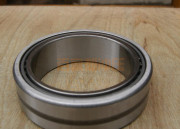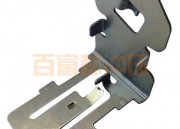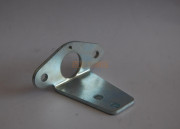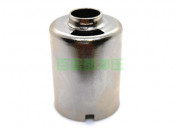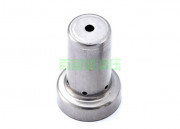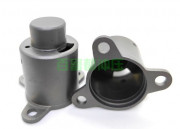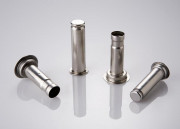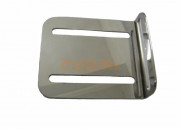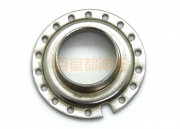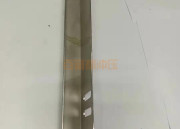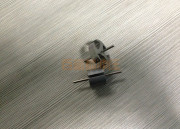Posted at 04/08/2022 , By deep drawing , Categories Blog,Industry , Comment Comments Off on What is the function of multiple stretching in the processing of automobile drawing parts? 1. The key to determining the technical performance of automotive tensile parts
1. Punching direction to determine the punching direction of the part is to determine the stretching process, the first problem encountered. It not only determines whether a satisfactory stretch can be drawn, but also affects the number of process compensation parts and the shape of the binder surface. The correct judgment of the stamping direction should meet the following three requirements.
(1) Make sure that the punch can enter the die. The shape of the lower right corner of the die protrudes outward, and the convex point exceeds the size of the die, so that the punch cannot enter the die, and the stretching direction cannot be stretched. Therefore, it is necessary to change the drawing direction in order to enter the die.
(2) Make the contact area between the punch and the blank large. The larger the contact surface, the smaller the angle of the contact surface to the horizontal. The blank is less prone to some stress overload that can cause the part to break. When tightening, improve the function of mold attaching, and easily achieve a good shape of the punch, which is beneficial to improve the degree of deformation of the part.
(3) Part of the feeding resistance on the pressing surface should be uniform. Uniform deep drawing is a condition to ensure uniform feeding resistance of each part of the pressing surface. The feeding resistance of each part of the pressing material surface is uniform, which is an important guarantee to ensure that the stretched part does not wrinkle or crack.
2. In order to complete the drawing, reasonably increase the feeding process, and often add process supplements on the basis of the workpiece, so as to achieve a satisfactory stretching effect.
The advantages and disadvantages of technical supplements are important signs of the drawing level of the tensile parts. Reasonable addition of technical supplements should meet the following three requirements:
(1), process drawing requirements.
(2) Requirements for pressing material.
(3) Trimming and flanging are required after stretching.
2. What is the effect of multiple stretching on the stretched parts?
1. Multi-stretching greatly improves the qualification rate in the production process of the product, and it is not easy to produce waste products, because the stress is relieved in the middle after multiple stretching, and the annealing softens.
2. Repeated stretching ensures the precision of the product and greatly improves the elongation coefficient and production efficiency.
3. Due to the high technical content of one-time forming, multiple stretching can increase the uniformity and reduce the product scrap rate.
Third, pay attention to the selection of automotive tensile parts
(1) The standard mold base should be selected as much as possible for the production of drawing parts. The type and specification of the standard mold base determine the type and specification of the upper and lower mold bases.
(2) The selected or planned mold base must be adapted to the relevant dimensions of the selected press table and related sliders, and the necessary inspections must be carried out. If the small shaping size of the lower die base should be at least 40~50mm larger than the size of the leakage hole of the press table.
(3), choose large-scale precision mold mold base ZG35.ZG45.
(4) The parallelism of the upper and lower parts of the die base should meet the requirements, and the parallelism is generally grade 4.
(5) The upper and lower die base guide sleeves and guide post device holes must be common, and the accuracy is generally required to be below ±0.02mm; the axis of the die base guide post. The axis of the guide sleeve device hole should be straight with the upper and lower planes of the die base. For matching, the axial direction of the device guide post and guide sleeve device should be the same as the upper and lower plane pens of the die base. The device guide post generally requires level 4.
(6) The roughness of the upper and lower surfaces of the mold base is Ra1.6~0.8μm, if the parallelism can be guaranteed, it can be reduced to Ra3.2~1.6μm. The function of the gasket is to directly accept and disperse the pressure transmitted by the punch, reduce the unit pressure of the punch, and prevent the die seat from being pressed in. The shape and size of the backing plate is the same as that of the die, and the fixing method is fixed with screws and pins.
The above is related to the processing of automobile drawing parts. The processing of drawing parts must meet the performance and technical performance of the product, and at the same time, it must be assembled and repaired, so as to make full use of metal materials, reduce the types and standards of data, and minimize The consumption of data, when qualified, select the information with lower price, and try to make the parts as waste-free and waste-free as possible. Hope the above content is helpful to readers.
Read More →


